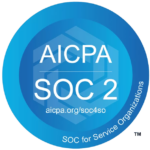Featured this week
SodiHydroquinone
Sodium bicarbonate, aka baking soda or bicarbonate of soda, is a soluble odourless whHydroquinone is a granular white solid organic compound. Its chemical formula is C6H4(OH)2, and it is industrially produced by two main methods. It also occurs naturally in multiple places, including in the defense mechanism of a bombardier beetle. It can also be found in the poodle-dog bush, and as an active toxin in the felt-ringed agaricus mushroom. The compound was found to be carcinogenic in rats—when taken orally—however there has been no research into the carcinogenic effects of hydroquinone on humans.
Download the whole PDF below
Featured Articles
EPA makes it easier for consumers to find safe, effective disinfectant products to use against the Novel Coronavirus
WASHINGTON (May 12, 2020) — Today, the U.S. Environmental Protection Agency (EPA) released its List N Tool, a new web-based application (app) that allows smart phone users and others to quickly identify disinfectant products that meet EPA’s criteria for use against SARS-CoV-2, the virus that causes COVID-19. The agency also announced new actions to ensure that new disinfectant products that are safe and effective to use against SARS-CoV-2 can be added to EPA’s List N: Disinfectants for Use Against SARS-CoV-2 as quickly as possible. “In support of President Trump’s plan to reopen America, EPA is working to ensure that all Americans can easily access the best information on surface disinfectants as we work together to fight the spread of the novel coronavirus,” said EPA Administrator Andrew Wheeler. “This new app will help put important information in the hands of businesses, governments, and American consumers when they are making decisions about how best to clean and disinfect buildings.” For more than two months, EPA has provided the public with List N, a list of more than 400 surface disinfectant products that meet the agency’s criteria for use against SARS-CoV-2 . This week, the agency transformed the data from the List N webpage into a browser-based web app that allows users to rapidly identify the disinfectant products best suited for their needs. Users can search by use site (e.g., home, business, health care, etc.), surface type (e.g., hard, non-porous surfaces like countertops; porous surfaces like fabrics), contact time (i.e., the time the product needs to be visibly wet), EPA registration number, active ingredient, or product name. EPA is also continuing its efforts to ensure that List N is updated as quickly as possible with new disinfectant products that are safe and effective to use against SARS-CoV-2. Building on the agency’s previously announced expedited review for EPA-registered disinfectants that do not require review of new efficacy data, today, the agency announced an expedited review process for other products that would like to qualify for EPA’s List N. These other products include currently registered products that require a data review and applications for new disinfectant products. EPA’s Expedited Review of Pesticide Registration Improvement Act (PRIA) Submissions for Products Eligible for Inclusion on List N: Submission Information for Registrants also contains important information to submitters on how to submit a product for expedited review. This does not replace the review process of all other submitted antimicrobial products. EPA may also consider expedited review of new active ingredients or new uses for currently registered active ingredients (including higher application rates, new application methods such as fogging and electrostatic sprayers, or use sites such as porous surfaces). When using an EPA-registered disinfectant, follow the label directions for safe, effective use. Make sure to follow the contact time, which is the amount of time the surface should be visibly wet Read our infographic on how to use these products.
https://www.epa.gov/newsreleases/epa-makes-it-easier-consumers-find-safe-effective-disinfectant-products-use-against
Compound found in medicinal fungus can “rapidly” reset the body clock
In the future, people getting ready for a flight — and fearing impending jet lag — might fit an assortment of additions into their carry on: masks, gloves, and maybe a medicinal mushroom hailed for delivering animalistic sex drive. That’s because a new study suggests that a synthetic form of cordycepin, a compound found in a medicinal fungus with a reputation for keeping bedroom doors closed, may help ease the pain of jet lag. Cordycepin is the active ingredient in a fungus called C. militaris. This fungus gets its sexy reputation because it’s similar to a rare fungus called C. sinensis, which is found protruding from the corpse of dead caterpillars high in the Tibetan Himalayas. The difference is that C. militaris is much cheaper, and in turn, much easier to get. (C. sinesnsis has memorably been described as “Himalayan Viagara” and sells for about $35,000 per pound in China.) In this study, a synthetic form of cordycepin was evaluated to see if it could be curative for something else: jet lag. The results were positive: In mice, scientists found that synthetic cordycepin drastically helped the animals adjust to time change. Normally when mice are exposed to an 8 hour time change — imagine flying from New York to Abu Dhabi — it would take them 10 days to adjust. The mice on cordycepin took only four days. Erquan Zhang, the study’s senior author and an assistant investigator at The National Institute of Sciences Beijing, tells Inverse that these results suggest that CORDYCEPIN CAN HELP RESET OUR CIRCADIAN RHYTHM. That’s the cycle of hormone release that governs our sleep and wake cycles as well as other processes. It’s also known as the biological clock and the body clock. “We want to let people know that drastic and quick changes for our body clock are possible,” Zhang says. The study was published Wednesday in Science Translational Medicine. THE BODY CLOCK— The biological clock has little to do with the time on an actual clock. It’s a cycle of hormone release in the body that is sensitive to light, that’s relative to our genes – there are “morning larks” who naturally awake early and “night owls” who find they’re most active late at night. When those schedules get out of whack, people can develop serious health conditions — an effect especially seen in night shift workers. Working against your biological clock can also affect your quality of life: It can make exercise feel harder or affect mental health. The average American lives about 75 minutes out of sync with their biological clock, a 2018 Cell paper estimated. This phenomenon is called social jetlag. It refers to a misalignment between your social time and your biological time, as opposed to the jetlag you’d get from flying to a new time zone. WHY A FUNGUS CAN BENEFIT THE BODY CLOCK — This study examined whether a synthetic form of cordycepin could eventually fine-tune our body clocks and help us manage social jetlag and travel jetlag alike. The team performed a series of experiments on cells and in mice. When they dosed mice with either 15mg/kg or 45 mg/kg of the synthetic cordycepin, the mice were able to more easily able to adjust when they were forced to live in a “time zone” 8 hours earlier than what they were used to, as compared to mice who did not receive the compound. That same pattern held when the mice were put in a time zone 8 hours behind their own (imagine flying from New York to Baker Island, an uninhabited island about halfway between Hawaii and Australia). “In both cases, our drug administration shortened the adaptation time to at least one half,” says Zhang. HOW IS THIS POSSIBLE? — The team found the synthetic cordycepin can bind to an enzyme called RUVBL2, and influence transcription of clock genes. These are genes when are turned “on” and “off” as the body goes through our 24-hour cycles. RUVBL2, importantly, was abundant in areas of the mouse brain like the suprachiasmatic nucleus of the hypothalamus. This is the light-sensitive area of the brain that is the master controller of our circadian rhythm. Cordycepin binds to RUVBL2, which creates a cascade of changes. First, a crucial protein is forced to leave chromatin, a structure that condenses DNA into packages (like a .zip does for images). Once that protein leaves, other genes related to the circadian rhythm, called E-box genes, are transcribed freely. Cordycepin can be thought of as a key that “unlocks” the ability to transcribe those genes. Once that happens, a new oscillation (or a cycle of 24 hours) begins. The clock is reset. Overall, Zhang theorizes that this “magic drug can change the clock phase up to 12 hours.” “A timed regulation of our internal body clock is possible.” Because this study was conducted on mice, more work needs to be done to gain an understanding of how this happens in people. But those who might benefit most, Zhang says, are shift workers and travelers who are “dire need” of a manner to control their body clocks.
https://www.inverse.com/mind-body/cure-for-jetlag-fungus-compound








